
Despite a fair bit of reporting on MIBS 2011 (Google search here), I failed to discuss what I saw during the back-to-back demonstrations of chirp fishfinding just before the show. In a word, it WORKS! All the writers — many of whom do a lot more fishing than I do — seemed to agree that they’d never before seen the target resolution imaged by both the Garmin GSD 26 and the Simrad BSM-2. And in some cases — like the fishy wreck near the Miami Harbor entrance above — we got to see both implementations of chirp in almost identical situations…
I say “almost” because it was much rougher during my Garmin demo, as indicated by the wavy bottom on the screen above, than during the Simrad trip the day before. Thus, it made no sense to pound our way to really deep water on Garmin’s Sea Hunter 37, but check out how flat it is below as the BSM-2 on the Team Simrad Yellowfin stays locked onto bottom at 1,129 feet while making the long run back to Miami at 45 mph…
Plus there’s the fact that Simrad was further along in its chirp developement when these demos took place, which I think is why the BSM-2 seemed to make better use of color to show softer, fishier targets, as you can see below over a wreck (also shown at left in StructureScan’s downview, at about its maximum depth range)…
However, I think the story here is more about chirp itself than the differences between how it’s been developed so far. Regardless of brand, long sonar pulses that range in frequency from, say, 130 to 210 kHz, as in the screen shot above, deliver a lot more information back to the boat. They do need an Airmar Broadband transducer, and both demo boats sported R209LH models (
PDF here) that are 46 pounds heavy and still
expensive by weight. Plus the chirp returns — which actually sound like a chirp instead of a ping — must also be analyzed by some clever pattern matching software, as illustrated in this Simrad slide
we saw in Palma…

But I suspect that all the chirp fishfinders will eventually offer fairly similar performance. And note that Furuno, Raymarine, and Geonav all say that they too are working with chirp technology, which, in fact, has been used in high-end commercial sonar for decades. Which is why I applaud Simrad for actually calling chirp CHIRP, and wish Garmin had too (instead of SST, or Spread Spectrum Technology). It’s not often that recreational marine electronics gets a distinct new technology with a distinct name, and using it will help consumers understand what’s going on. (Not that Navico/Simrad is innocent in this department, which is why they’ll spend time explaining why only one of their Broadband fishfinders really works with Broadband transducers.)
At any rate, you can see some chirp frequency range choices offered by a BSM-2 and an R209LH below (note that Airmar plans a LM model that will substitute a Medium 80 to 135 kHz range for the High one). I gather that since the demo Simrad has added the ability to dial in any single discrete frequency available on a transducer, a feature Garmin already had in Miami along with infinite custom chirp range presets that Simrad may also be considering. Meanwhile, Garmin said they appreciated how a Simrad display lets a user scroll back through sonar that’s gone off screen, and maybe we’ll see that on Garmin displays by the time the GSD 26 ships in August. So it goes! On the screen below note also how well the BSM-2 is imaging bits of sealife passing under the docked demo boat in just a few feet of water, which we also saw on the Garmin boat…

Here’s another screen showing how clean and high res the GSD 26 can look on a Garmin 7212. It’s also a reminder of Garmin’s big-button touch screen style, which I
discussed recently in relation to Simrad’s new NSS touch screen series. I don’t have an NSS screen shot illustrating it, and it may change over time, but many of the menus on an NSS look a lot more like the standard NSE knob and button menus seen above than something really meant to touch easily with a finger…
Finally, and even more unrelated, here’s a shot of some other Garmin gear that was looking good on the demo boat. I can’t recall just which xHD radar scanner was in use — maybe
the 6-foot 12 kW big kahuna — but it sure did paint Miami details and complexities well. I also got to see how a Garmin autopilot can steer a route automatically calculated by the MFD (if it’s using g2 Vision cartography) and how it handles a boat as coltish as the Sea Hunter. All impressive.


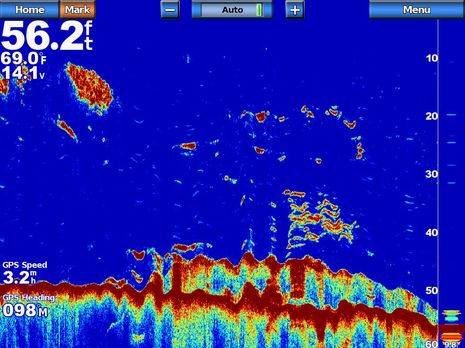
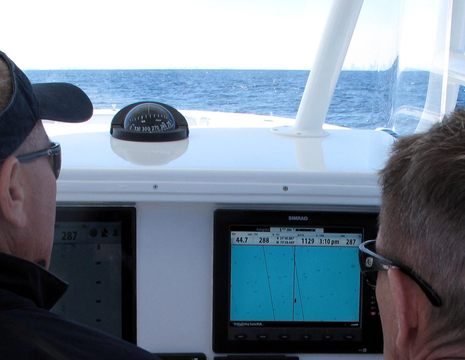
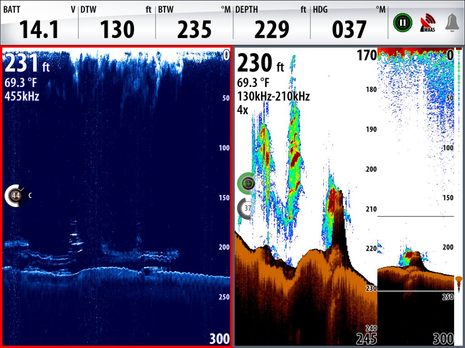

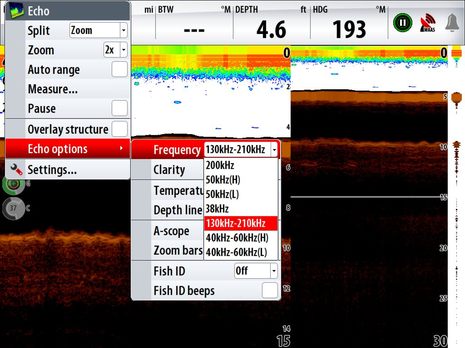

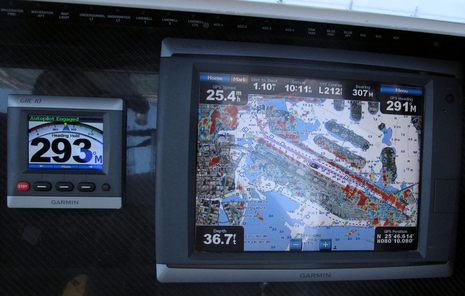


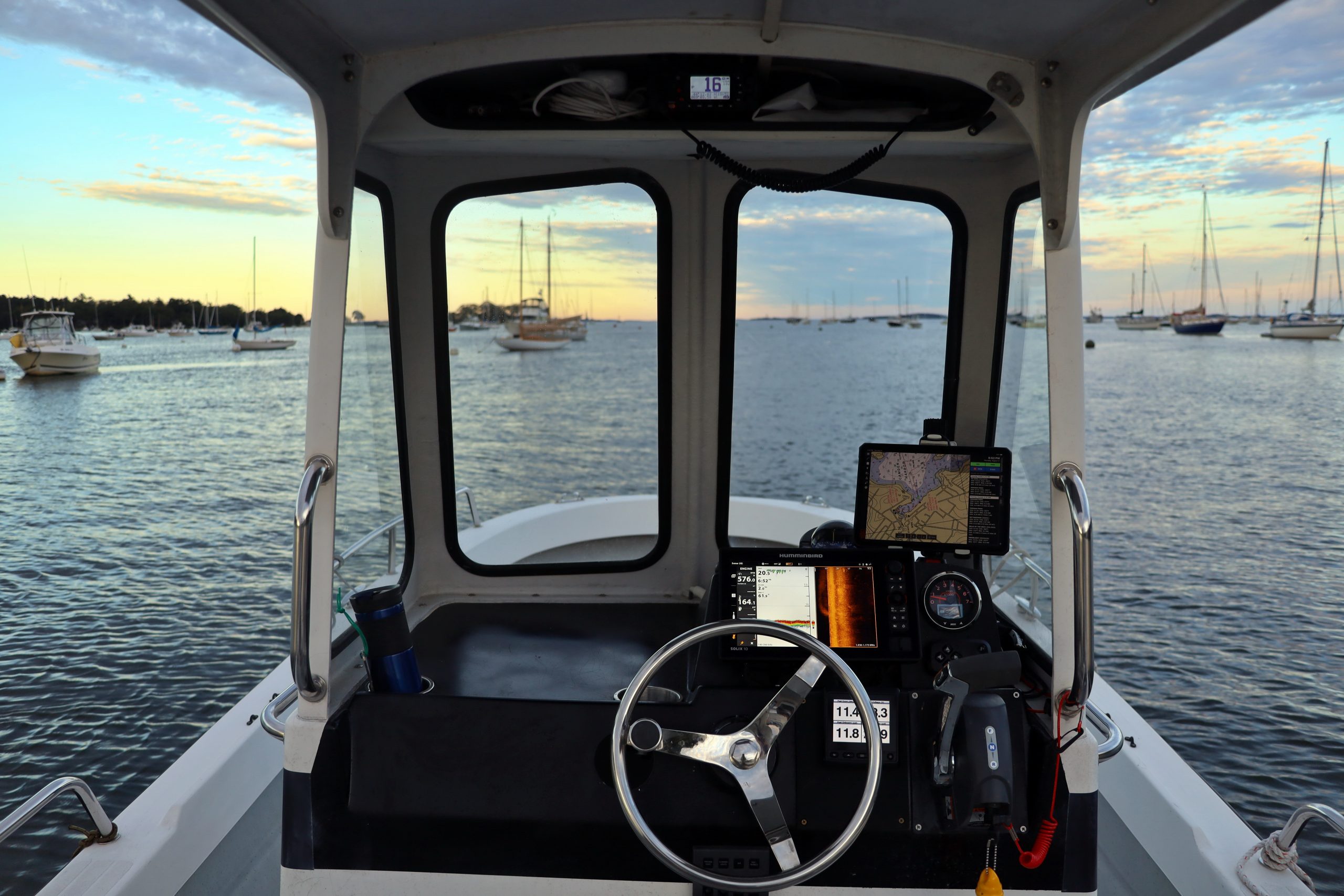








Also in Miami, Garmin and Volvo Penta announced a strategic alliance “to develop and market innovative marine instrumentation and communication equipment”:
http://goo.gl/N3xqC
And it’s always fun poking through press releases for other sections of Garmin, wondering what might eventually make it into marine products. Could the brand new touch screen watch?: http://goo.gl/qfevm
More likely, I think, might be the voice commands and other audio features that recently came to Garmin avionics: http://goo.gl/OZmaF
Ben …..
How do you like the Simrad menu displays/functionalities?
Drop Down Menus
Thanks …..
Tom
Tom, the Simrad menus work fine with their knob and its push-to-enter function, but they’re not very easy to use by touch, especially on the smaller screens. Garmin designed its whole interface for touch, but then again their touch MFD’s are pure touch (excepting the wireless remote and mouse).
My friend Glenn Law has some fresh words on CHIRP at Saltwater Fisherman: http://goo.gl/kgP56